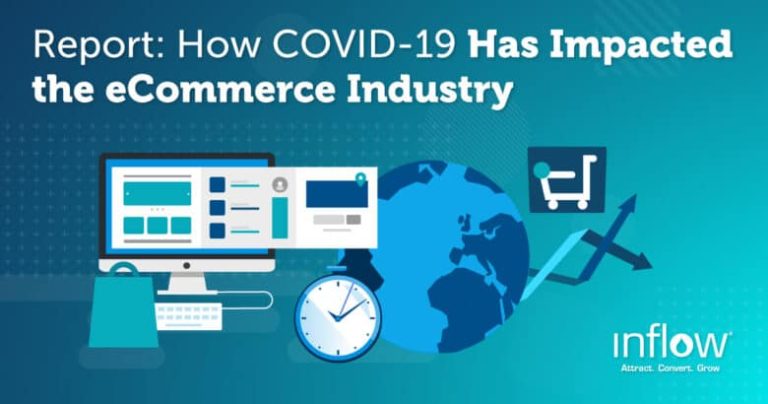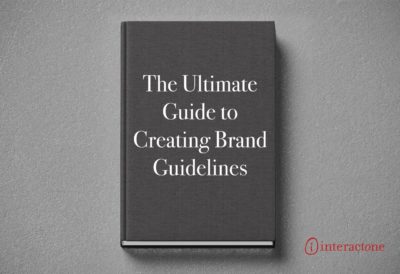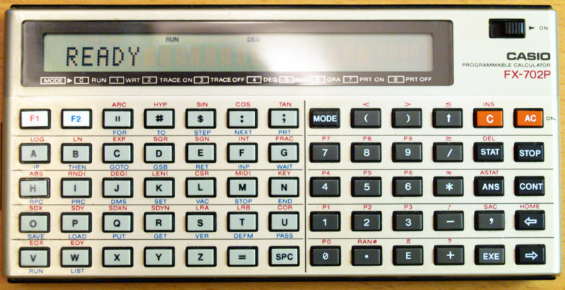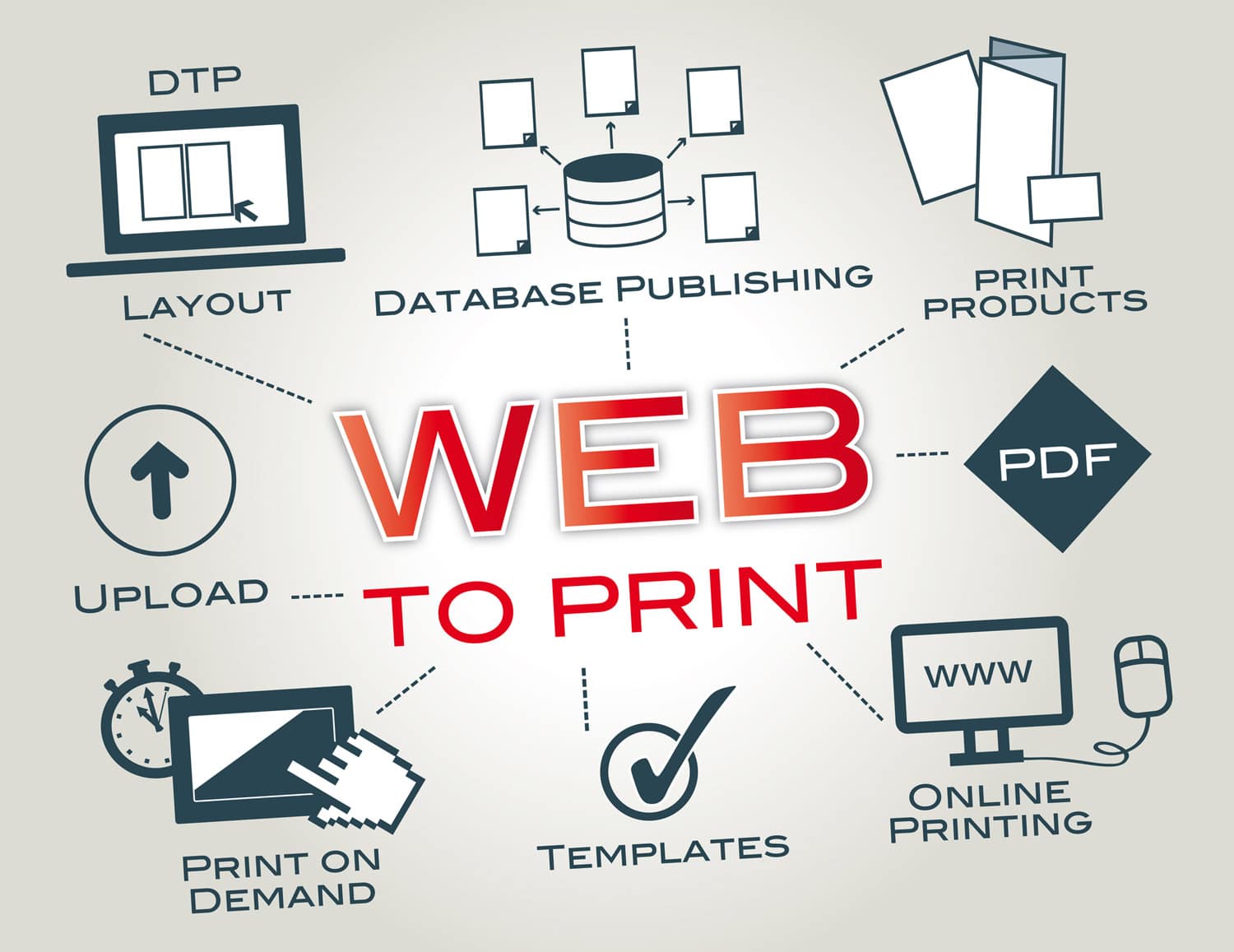
In the early 1980s, printers began making themselves available to the public, and the print-on-demand era was launched. Until this point, having T-shirts, books, journals, calendars, planners, or practically anything else printed was a chore!
The process required adhering to strict technical design specifications, ordering in bulk (before the sale was made), housing inventory, and fulfilling orders yourself. It was a huge investment and a fairly large gamble.
What if that planner didn’t sell well? What happened if the journal didn’t find its preferred target customer? Unlike with digital products, you can’t simply wave off the failure of cases of printed books.
Slashing prices on less-than-successful products might allow you to at least cover your expenses, but you would have wasted all that time with no profit to show for it.
What Is Print-On-Demand?
Print-on-demand (POD) unlocked the publishing door. This platform allowed microsellers (think solo entrepreneurs and small businesses with 5 or fewer employees) to compete in what was previously beyond their reach due to cost and risk.
Here are three examples of how print-on-demand works:
- Mugs
- T-shirts
- Journals, Planners, and Books
Who Is Involved With Print-On-Demand?
Unless you’re a one-stop-shop and you do it all yourself (from brainstorming ideas and publishing to the POD platform), you’ll likely have help.
- Ecommerce sellers
- Low-content sellers (including print-on-demand journals, customer planner printing, print-on-demand for Etsy or Amazon books)
- People seeking passive income
- Virtual assistants who work with low-content publishing
- Graphic artists who create designs
The process goes something like this…
You (or your team) find print-on-demand products you want to sell. There are all sorts of options to choose from. You might prefer some of the ones listed previously (mugs, journals, planners, books, T-shirts, etc.), or perhaps one of these is more to your liking:
- Bags or totes
- Canvas prints
- Beach towels
- Phone covers
The POD company provides the base product (the paper for books/journals, for instance) and you provide the design. In the case of print-on-demand journals, you would upload the cover art, interior page designs, and back cover.
The print-on-demand organization will give instructions for setting up your Etsy (or other) listing so that — when a customer places an order — the order is automatically conveyed to the POD company. Only when they receive an order will they print the journal and ship it to the customer.
The cost of printing and shipping is deducted from your sale amount, and the profits are deposited into your account.
After you create the design, you don’t have to touch anything else!
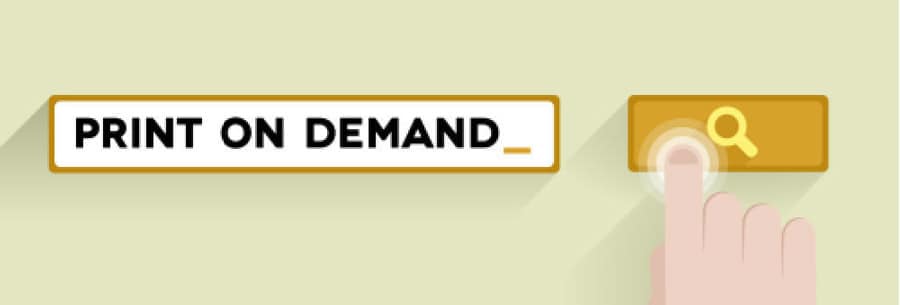
Customers love these types of products because they are:
- Inexpensive
- Useful
- Often popular gift items
Low-content publishers love them because they:
- Are inexpensive to create
- Sell fast
- Require zero inventory
- Have high profit margins
The system couldn’t be easier, right? You create your print-on-demand books, develop the low-content products, put them up for sale, and it’s passive income from then on out! Well, sort of.
Where The Perfect Process Goes Sour
Here are 5 major issues with print-on-demand books (including print-on-demand journals, Amazon print-on-demand books, custom planner printing, and more) that most people aren’t talking about.
1. Finding Niches That Want Journals, Planners, Etc.
It sounds simple, doesn’t it? But if you want your custom planner to sell well, it needs to appeal to a particular audience. A niche. Everyday, generic journals, planners, and notebooks don’t sell as well as those created for a specific group of people.
Perhaps yours should attract students or moms or fitness enthusiasts. How do you know which niche you should go after?
You might consider:
/* .tcb-flex-col { padding-left: 0px; }[data-css=”tve-u-345ecec949e2551″] { width: 100%; float: none; margin: 0px auto !important; padding-right: 0px !important; padding-top: 0px !important; padding-left: 10px !important; }[data-css=”tve-u-15ecec949e2527″] { padding: 20px 20px 0px !important; margin-bottom: 20px !important; }:not(#tve) [data-css=”tve-u-315ecec949e2549″] button { border-color: rgb(85, 85, 85); font-size: var(–tve-font-size, 16px); font-weight: var(–tve-font-weight, var(–g-regular-weight, normal)); background-image: none !important; background-color: rgb(222, 114, 114) !important; font-family: var(–tve-font-family, “Open Sans”); text-transform: var(–tve-text-transform, capitalize); }[data-css=”tve-u-315ecec949e2549″] { –tve-font-size:16px; –tve-font-weight:var(–g-regular-weight, normal); –tve-font-family:”Open Sans”; –g-bold-weight:700; –tve-text-transform:capitalize; }[data-css=”tve-u-285ecec949e2545″]::after { clear: both; }[data-css=”tve-u-275ecec949e2544″] { font-size: 15px !important; }[data-css=”tve-u-105ecec949e2530″] { color: rgb(222, 114, 114) !important; font-family: “Open Sans” !important; font-weight: 400 !important; }[data-css=”tve-u-105ecec949e2530″] strong { font-weight: 700 !important; }:not(#tve) [data-css=”tve-u-95ecec949e252f”] { font-weight: var(–g-bold-weight, bold) !important; line-height: 1.15em !important; font-size: 26px !important; }[data-css=”tve-u-365ecec949e2553″] { float: none; margin-left: auto !important; margin-right: auto !important; }:not(#tve) [data-css=”tve-u-375ecec949e2554″] { font-family: Verdana, Geneva, sans-serif !important; font-weight: var(–g-regular-weight, normal) !important; font-size: 12px !important; }[data-css=”tve-u-135ecec949e2533″] { font-size: 15px !important; }[data-css=”tve-u-175ecec949e2537″] { font-size: 15px !important; }[data-css=”tve-u-195ecec949e253a”] { font-size: 15px !important; }[data-css=”tve-u-215ecec949e253d”] { font-size: 15px !important; }[data-css=”tve-u-235ecec949e253f”] { font-size: 15px !important; }[data-css=”tve-u-255ecec949e2542″] { font-size: 15px !important; }:not(#tve) [data-css=”tve-u-165ecec949e2536″] { font-family: Verdana, Geneva, sans-serif !important; line-height: 1.15em !important; }:not(#tve) [data-css=”tve-u-185ecec949e2539″] { font-family: Verdana, Geneva, sans-serif !important; line-height: 1.15em !important; }:not(#tve) [data-css=”tve-u-205ecec949e253c”] { font-family: Verdana, Geneva, sans-serif !important; line-height: 1.15em !important; }:not(#tve) [data-css=”tve-u-225ecec949e253e”] { font-family: Verdana, Geneva, sans-serif !important; line-height: 1.15em !important; }:not(#tve) [data-css=”tve-u-245ecec949e2541″] { font-family: Verdana, Geneva, sans-serif !important; line-height: 1.15em !important; }}@media (max-width: 767px){[data-css=”tve-u-05ecec949e2523″] { background-image: none !important; }[data-css=”tve-u-335ecec949e2550″] { text-align: center; background-image: none !important; }[data-css=”tve-u-25ecec949e2528″] { background-image: none !important; }[data-css=”tve-u-55ecec949e252b”] { padding-top: 0px !important; }[data-css=”tve-u-45ecec949e252a”] { background-image: none !important; margin-bottom: 0px !important; }[data-css=”tve-u-75ecec949e252d”] { background-image: none !important; }[data-css=”tve-u-15ecec949e2527″] { padding-bottom: 20px !important; margin-bottom: 0px !important; padding-left: 10px !important; padding-right: 10px !important; }[data-css=”tve-u-85ecec949e252e”] { padding: 10px 0px !important; background-image: none !important; }[data-css=”tve-u-295ecec949e2546″] { max-width: 336px; margin-top: 0px !important; padding-top: 0px !important; margin-right: auto !important; margin-left: auto !important; background-image: none !important; }[data-css=”tve-u-345ecec949e2551″] { width: 120px; margin-left: auto !important; margin-right: auto !important; margin-bottom: 10px !important; }}
/*]]>*/
/**/
5 Things You Can Sell On Etsy Today That Don’t Require Any Inventory
Discover products that are:
- Highly Profitable
- Require No Up-Front Investment
- Require No Inventory
- Require No Shipping By You
- Fly Off The Virtual Shelves With Ease
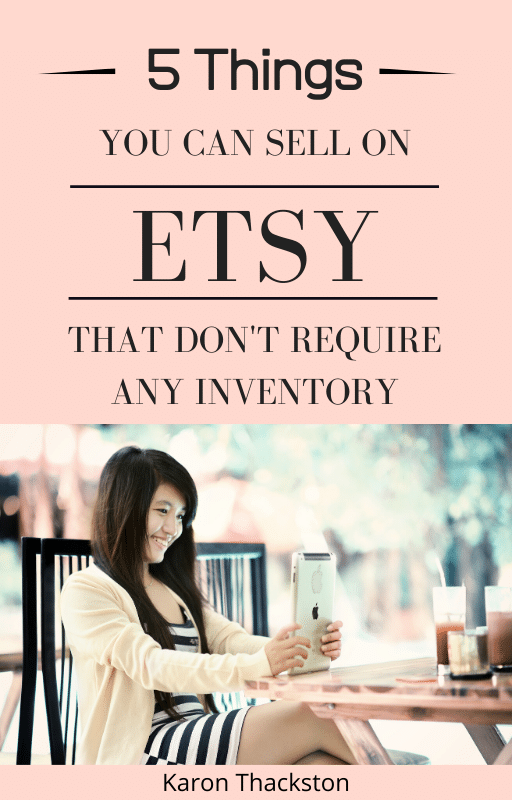
I understand that I will also receive weekly articles & videos plus periodic discounts, product notices & more.
I can unsubscribe at any time.
- Start with a bit of brainstorming. If you choose to go with print-on-demand for Etsy, it won’t take much research to figure out that Etsy core shoppers are primarily female (over 80%), and are typically between 25 and 40 years old (according to Statista).
If you’re looking at Amazon print-on-demand books, it might take a bit more digging. Amazon is notoriously tight-lipped about its user demographics, but from a few reports done in years past, an educated guess is that Kindle users are primarily female (over 56%) and within the age range of 35 to 55.
- Defining the customer’s personality. Etsy shoppers love the allure of handmade, custom items that aren’t sold at every other online shop. They like feeling privileged and as if they own something that is a rare find.
On the other hand, Amazon shoppers tend to like the opposite, meaning they love a large selection of popular goods that ship fast at low prices.
Once you have a good idea of who you’re creating print-on-demand books for, you can work toward defining niches using keywords. Start with defining trends.
- Search Google Trends. If you decide to go after a women’s niche, Google Trends can show you what people are searching for that is currently trending. When I typed in “women’s,” Google Trends brought up a short list, including the following:

You can, of course, type in much more detailed keywords, but we’ll start here. Using Women’s Tennis Association, I’ll do a little research on tennis-related keywords and see if that gives me somewhere to go.
- Keyword research. If I type “tennis journal” into Amazon or Etsy, I find listings on both sites. However, as I scroll, I also see other products to consider, such as practice logs, and also a match stats journal. These are other exceptional ideas for print-on-demand books.
Have you found that Amazon, Etsy, or other sites you’re considering are currently having sales for these types of books? Then use a simple keyword research tool (such as Keywords Everywhere) or Etsy-specific and Amazon-specific keyword tools, including Marmelead or Helium 10, for more detailed research.
2. Constantly Developing New Print-On-Demand Books
To stay on top of your game, and to continually grow your store, you’ll need to regularly develop new print-on-demand books to sell.
The process listed above is a good starting point and can be used repeatedly to replenish your ideas for print-on-demand journals, custom planners, and other print-on-demand publishing options.
3. Creating Gorgeous Professional Designs
To stand out in the crowd takes creative, unique cover and page designs. If you’re doing it yourself, you need inspiration or software that can help.
If creating POD book designs is your business, you need resources to help you work fast and professionally in order to make more in less time.
Here’s a new resource that allows you to create 10 print-on-demand books in about 1 hour! Save $10 with code KTPPJVIP.
4. Tedious Processes That Take Too Much Time
Using Canva is a common way to create print-on-demand books. That only gives you the skeleton of the publication, however.
In order to create custom planners for printing, it’s necessary to insert headers for each page or change dates on calendars (for example). And that all takes time. That can really increase the production time of all your low-content publishing products.
The trick is to find a process that does most or all of the work for you. Plug And Play Journals software does just that. It takes the chore out of producing print-on-demand books of all sorts so you can get finished creating and start selling.
5. Scaling Your POD Business
Finally, in order to grow your business, you must systemize. Starting over from scratch with every new product means you’re behind the curve right from the beginning. Almost every publishing pro will tell you that having a rinse-and-repeat process cuts time — which, in turn, increases revenue.
Automating as much of the production process as possible and creating systems that are easy to reproduce guarantee your ability to scale on a steady pace.
When you tame some of the more ferocious POD problems, that opens the door for you to:
- Have more time to create
- Sell like a brand-name ecommerce company
- Save money on expenses
- Enjoy more freedom
- Revel in all the passive income you’ll make
Have questions about print-on-demand books? Talk to me below!
Other Related Posts You’ll Love
Start Your Print-On-Demand Business & Make Passive Income Online With No Inventory
The Power & Profits of Low-Content Amazon Self-Publishing (No Inventory!)

